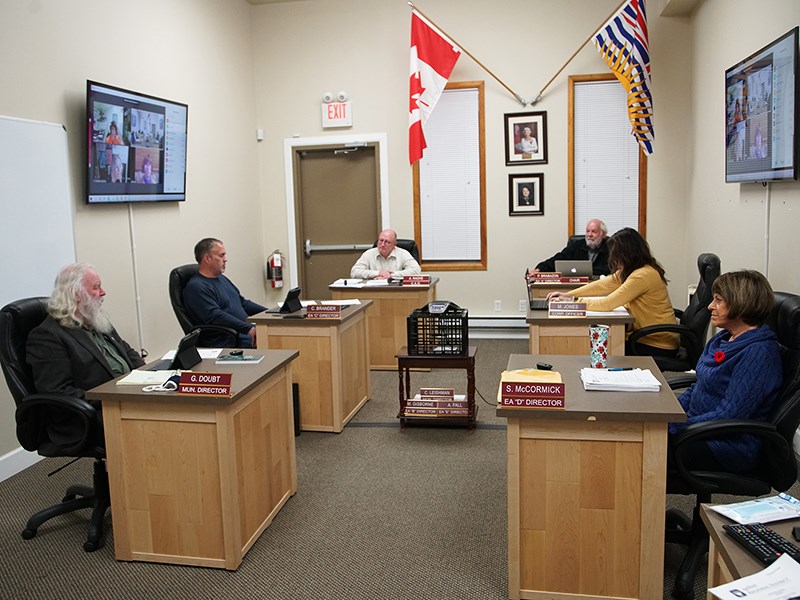qathet Regional District (qRD) board of directors is expressing no objection to BC Ministry of Transportation and Infrastructure (MOTI) for a proposed six-lot subdivision application at Verkerk Road, south of Powell River.
At the October 29 regional board meeting, directors listed four conditions for the subdivision.
These included: Proof of on-site water and sewer servicing on each or the proposed lots from Vancouver Coastal Health; The applicant provide qRD with funds in lieu of park dedication in accordance with Section 510 of the Local Government Act; The application enter into a covenant with qRD to protect the riparian area over the proposed lot five; A six-metre easement in favour of qRD be established along the southern boundary to safeguard driveway access through the property for emergency response and fire protection purposes.
According to a staff report, lots would range from 1.4 to 1.5 hectares and be developed for rural residential use.
Electoral Area B director Mark Gisborne said he had three points he would like to make related to this subdivision application. These included parkland acquisition, active transportation and traffic volume on the easement.
Gisborne said on the first point, staff did not inform the applicant or planning committee that a portion of land could potentially be required for the purposes of parkland. He said there seems to be some disagreement about the section of the Local Government Act that can be implemented. The official community plan (OCP) does not directly specify specific locations for parks and greenspace, said Gisborne. However, it does identify locations of sensitive ecosystems and riparian areas, he added.
“The parks and greenspace plan referred to in the OCP policy outlines that sensitive ecosystems and riparian areas should be considered possible candidates for parks and greenspace purposes,” said Gisborne. “It should also be noted that just because an area becomes a park does not necessarily mean it must be developed.”
Gisborne said there is potential for parkland dedication, however, he does not believe the applicant was made aware of a parkland requirement.
“If the OCP needs to be more direct for staff to offer a recommendation to the applicant and the board, perhaps the OCP will need to be amended to state that certain ecosystems could be required for parks and greenspace purposes,” said Gisborne. “Perhaps, we should get a legal opinion to inform the board, but that would take time and I don’t think it’s fair to the applicant to delay this application any further.”
Gisborne said in terms of active transportation, OCP policy states that the regional district will endeavour to reduce the tendency to use automobiles. He said the stretch between Maris Road and the golf course is dangerous and traffic exceeds the speed limit along that stretch. An active transportation trail is something the community desires, according to Gisborne.
“I do think the regional district should consider potentially requesting an easement for a future active transportation route,” said Gisborne.
He said his third point was vehicle traffic on the easement. The OCP considers home-based industrial and commercial operations to be acceptable land uses on land designated rural residential, according to Gisborne. He asked if the regional district could consider entering into a covenant prohibiting industrial or commercial uses.
“My understanding from MOTI is every parcel has a 20-metre-wide public access road designation,” said Gisborne. “My main question to staff is could we request a covenant on that proposed lot three even though it’s not entirely consistent with the OCP?”
Manager of planning services Laura Roddan said covenants are generally used for conservation purposes and limiting development on portions of property such as a riparian area or sensitive ecosystems. She said home-based industry is allowable but that is on properties two hectares in size or larger, so it would not be an allowable use on the property in question.
“I don’t think a covenant would be able to restrict use on that property,” said Roddan.
Regional directors unanimously carried the motion to send the application to MOTI.



